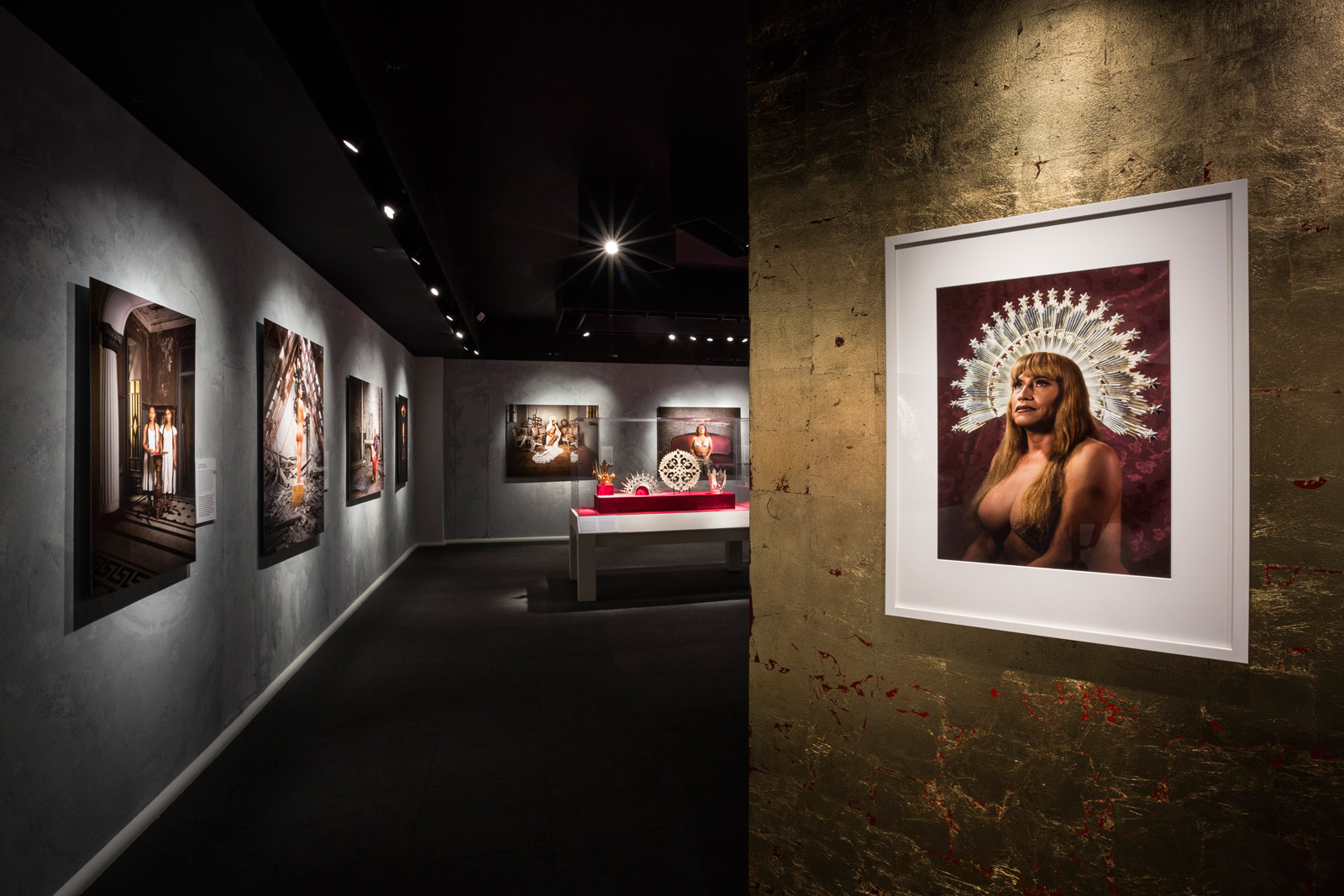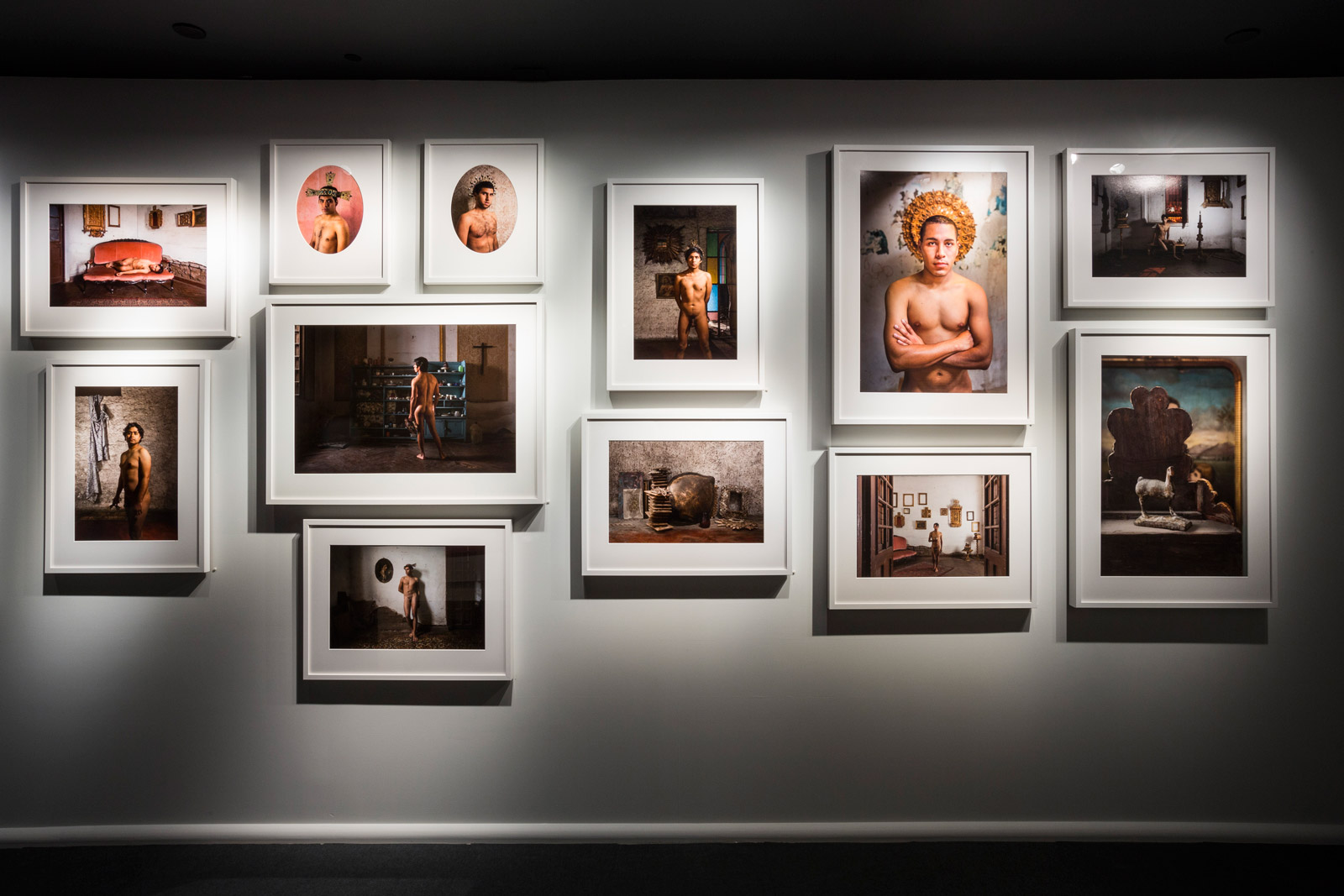Juan Jose Barboza-Gubo + Andrew Mroczek’s “Canon” at the Museum of Sex
A riveting, NSFW exhibition celebrating the Peruvian LGBTQ+ community

Perhaps the most shocking attribute of NYC’s Museum of Sex happens to be the vast amount of important information circulating within its walls. Beyond the joyous, bouncy Funland, progressive programming—both permanent and temporary—aims to open eyes on the past, present and future of sex. The latest installation, “Canon,” once again succeeds at this. Curated by Lissa Rivera and featuring the works of Juan Jose Barboza-Gubo and Andrew Mroczek, the exhibition implores visitors to consider the LGBTQ+ scene of Peru. Every nation has advanced at its own pace regarding the queer community. Through personal imagery, “Canon” addresses social atrocities and resilience. This is the first time Peruvian artist Barboza-Gubo and American artist Mroczek have had all four of their projects (three of which are outlined below) together in one exhibition—including their video performance piece “Anda.” United, it’s a beautifully aggressive, raw and ever-thoughtful experience. Every image is worth considering and every word worth reading.

One of the most eye-opening sections of the exhibition, “Virgenes de la Puerta” (Virgins of the Door) focuses on Lima’s transgender community. A distressingly marginalized group, transgender women have been “cast aside by the political and religious administrations for well over 500 years,” the artists note. The large-scale photographic works capture serene moments saturated in mood. The subjects are almost honored. Religious iconography is invoked. And while the images certainly tell a story, accompanying text offers factual insight along with the narrative. As with the next series, this portion is as much about storytelling as it is photography.

The hints of voyeurism flirting with Barboza-Gubo and Mroczek’s “Los Chicos” series stem from something quite different. All of these images were shot in a hidden mansion but it took tremendous bravery to be revealed in this manner—and be captured photographically—in such a society of traditional masculinity. Here, the gay male subjects reveal a strong, empowered community. Through stunning imagery, the viewer gets a glimpse at the hidden and yet quite visible. It’s this visibility, from the community, that’s led to LGBTQ+ advancements in Peru in recent years.

Perhaps the most unexpected portion, the “Crowns and Virgin’s Cape” sculpture and textile contributions touch on the magnificent and fantastical. Barboza-Gubo and Mroczek partnered with local artisans on the design and production of objects used in the two aforementioned sets of images. From silver and gold crowns to a 25-foot hand-crocheted veil (comprised of hundreds of embroidered flowers made by women in Ayacucho), these pieces all intensify the potency of the photos. Removed from the image, they’re a testament to craft—and dedication. “We wanted the women to be surrounded by everything that makes this country so unique and beautiful,” Barboza-Gubo explains. The embroidered pieces also represent the effort artists are making to capture and broadcast the importance of these communities, emphasizing their beauty.

No nation fully embraces its LGBTQ+ citizens, and the transgender community suffers on a global scale. This glimpse at queer worlds in Peru reinforces such sentiments, but also acts as a reminder that many struggle regardless of borders and identities—both beautiful and distinct—can be linked across continents and across the globe.
“Canon” runs now through 15 January 2018.
Images by Natan Dvir and courtesy of the Museum of Sex












